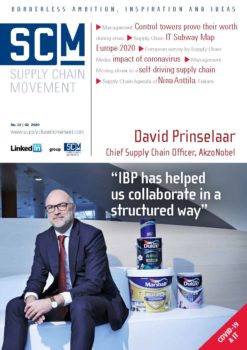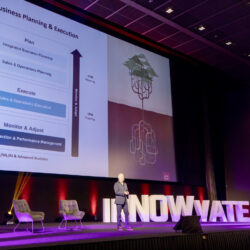Moving closer to a self-driving supply chain

New technologies such as artificial intelligence (AI) and machine learning (ML) are giving sales & operations planning (S&OP) an extra boost. The use of external data and scenario planning provides even better guidance when aligning supply and demand. A future of autonomously operating, self-driving supply chains is on the horizon.
By Marcel te Lindert
Pharmaceutical giant Merck cannot allow itself to suffer stockouts; countless sufferers of cancer, diabetes and heart problems around the world depend on the company’s medicines. “Quality and service are extremely important. Our service level is very high: around 99%,” says Christophe Revirron, Chief of Staff in Merck Healthcare’s IT department.
Behind that high service level is a worldwide supply chain comprising dozens of locations manufacturing thousands of different products, ranging from pills and potions to powders. It is an ongoing challenge to manage the complexity. “Of course we could reduce stocks and costs here and there, but those aren’t the trade-offs we make. Our decisions are primarily focused on maximizing the service levels so that we can always supply all our customers and patients as needed. We mustn’t strive for lower costs or inventory at the expense of our patients,” states Revirron emphatically.
Self-driving supply chain Merck
To improve its decision-making, Merck has set up an autonomous, self-driving supply chain. In practice, that means keeping manual adjustments to the demand planning and supply planning to a minimum. Revirron likens it to a self-driving car, which doesn’t get distracted, always follows the rules of the road, has a quick response time and therefore causes fewer accidents than a vehicle with a person at the wheel.
In the same way, a self-driving supply chain performs better than a supply chain managed only by people. “It starts as early as the forecasting. A machine learning-based forecast is always better than one prepared based on human brainpower alone. It still isn’t right all the time, of course, but it’s less wrong – especially for product groups with high volumes and high volatility. The more people that provide input for the forecast, the less accurate it becomes,” says Revirron.
Data availability
The self-driving supply chain is aimed at helping Merck to respond more quickly to trends and developments in the market. More responsiveness will enable the company to adapt its supply chain sooner in order to safeguard its high service levels. Besides that, faster action is often more effective and efficient, which leads to lower costs and less need for large safety stocks. “A self-driving supply chain revolves around demand planning and supply planning. We can automatically predict the demand using artificial intelligence. We can then automatically align the supply with that. There’s no need for people to get involved. That’s the ultimate goal,” he explains. … … …
 Want to read more?
Want to read more?
Subscribe to the digital subscription to read the full version >>
or
select one of our annual or digital subscriptions to receive the next issue >>
This article was first published in Supply Chain Movement 37 | Q2 – 2020










